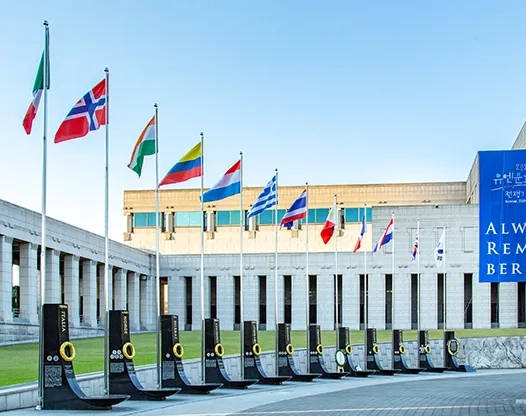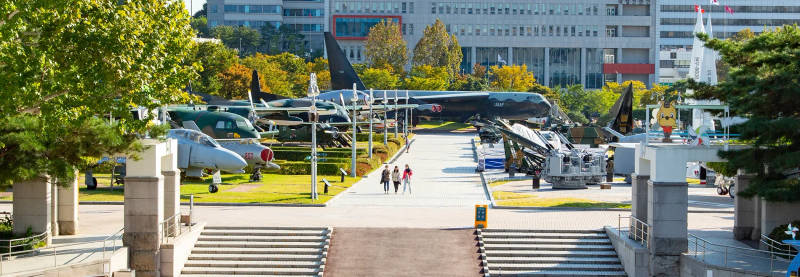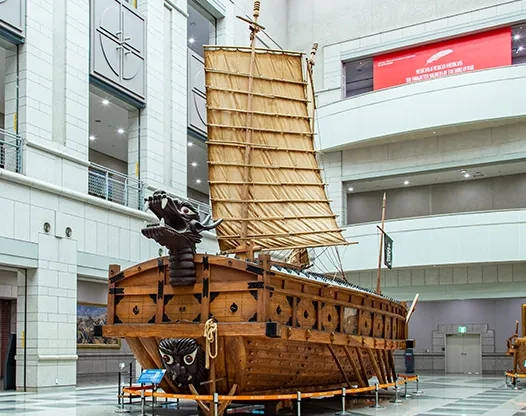
War Memorial of Korea Entrance Fee, Reviews
Visit the War Memorial of Korea to learn about South Korea's history, especially during times of war. It might not be the happiest topic, but it helps you understand South Korea today. I highly recommend a visit, and for those who are interested, I can share details about the location, opening hours, and entrance fees for the War Memorial of Korea.
War Memorial of Korea Reviews
To this day, Korean men continue to serve in the military. This memorial does an impressive job showcasing Korea's military past and the various conflicts that have shaped its history.
This memorial isn't just about looking back at the past. It's an opportunity to understand the broader context of South Korea's external history and its historical connections with China, North Korea, and Japan.
While peace is humanity's goal, the memorial reminds us that merely wishing is not enough - preventing conflict through strategic defense and international cooperation are equally key. The exhibits demonstrate how a country protects its people.

Monuments for the participating nations of the Korean War
As you explore both the indoor and outdoor sections of the War Memorial of Korea, you'll encounter real tanks and fighter jets that were once in active service.
Some of these exhibits even allow visitors to touch and sit inside them, providing an immersive experience and a closer look at these historical artifacts.


Admiral Yi Sun-sin and Turtle Ship
In this exhibit, you'll find a model of the turtle ship, a creation of Admiral Yi Sun-sin, a revered naval commander and national hero in Korea.
The turtle ship boasts a unique design, featuring a roof resembling a turtle's back and equipped with spikes for protection against enemy attacks, deterring foes from boarding.
Admiral Yi Sun-sin holds a significant place in Korean history, gracing the 100 won bill, and a majestic statue stands in Gwanghwamun Square.
His life has been portrayed in many dramas and movies. If you ask a random person on the streets of Korea about their heroes, it's likely Admiral Yi Sun-sin's name would top the list.

The statue of Admiral Yi Sun-sin in Gwanghwamun Square.

The Imjin War, from 1592 to 1598, started with Japan's invasion of Korea. Admiral Yi Sun-sin valiantly defended the South Sea, successfully preventing Japanese forces from encroaching upon Korean soil.
In the Battle of Myeongnyang, he utilized the unique geographical features of a narrow strait where tidal currents changed direction four times a day. Despite commanding only 13 ships against 133 Japanese ships, he emerged victorious.
Despite being outnumbered and facing a well-prepared enemy, Admiral Yi Sun-sin's exceptional strategies secured victories in nearly every battle throughout the seven-year war.


The Korean War and UN
During my visit, I had the opportunity to learn about the Korean War—its origins, how it concluded, and the assistance provided by other countries— thanks to the artifacts and pictures on display.
The Korean War started on June 25, 1950, with North Korea's invasion of South Korea, supported by the Soviet Union and China.
Twenty-two countries, including the US, UK, Australia, Netherlands, Canada, France, New Zealand, the Philippines, Turkey, Thailand, South Africa, Greece, Belgium, Luxembourg, Ethiopia, and Colombia, fought alongside South Korea as part of the UN forces.
I felt genuinely thankful for the UN Allied Forces, who played a crucial role during the war. The war ended in a ceasefire on July 27, 1953.

In the memorial, there's a big section honoring South Korean soldiers who died, as well as allies from 22 UN countries in the Korean War, Vietnam War and more. Reading the tons of engraved names made me real sad.
Fighting for your own country requires courage, but joining another's war for people you never met is amazing. I'm grateful, once again, to all who kept the peace here.
This place shows me how the freedom we enjoy today is the result of others' sacrifices, not merely handed to us. This experience made me realize that the freedom and peace we enjoy in Korea today weren't simply given to us, they were hard-fought and protected by the sacrifices of many. I realized that we should never take peace for granted.



War Memorial of Korea Location & Subway Station
How to go to the War Memorial of Korea?
- Address: 29 Itaewon-ro, Yongsan-gu, Seoul
- Subway Stantion: SubwayLine 6, Samgakji Station, Exit 12 OR Subway Line 4, Samgakji Station, Exit 1
- Website: 🔗 The War Memorial of Korea
War Memorial of Korea Entrance Fee, Opening Hours
🟡 Tuesday - Sunday: 9:30 AM - 6 PM (last entry 5 PM)
The War Memorial of Korea is closed every Monday. It is open from 9:30 AM to 6 PM, and the last entry is allowed until 5 PM.
🔴 Closing Days:
- Monday (Open on Mondays during holidays, and closed on the day following holidays.)
- January 1st
- Seollal (Lunar New Year's Day)
- Chuseok (Korean Thanksgiving Day)
🟢 No Reservations Needed:
- Walk-ins are welcome, no advance booking required.
- Admission is free - no tickets to purchase.
Wrap-up
My visit to the War Memorial of Korea was incredibly meaningful. The phrase 'a nation that forgets its history has no future' has taken on even greater importance for me now. Since there is no entrance fee, I strongly recommend checking the opening hours and location and making a visit to have a meaningful experience in Korea.
Credits
The images featured in this post are courtesy of the War Memorial of Korea's website.